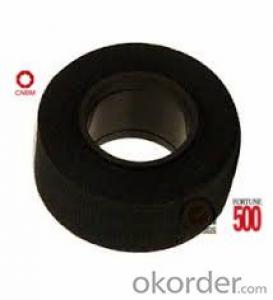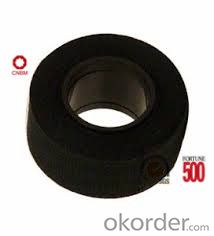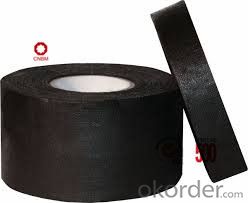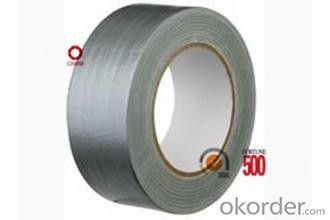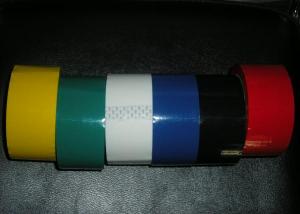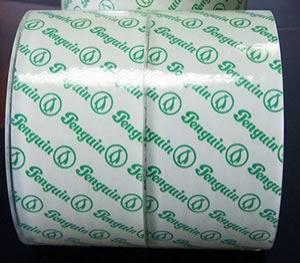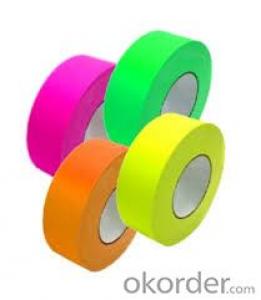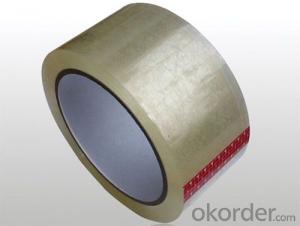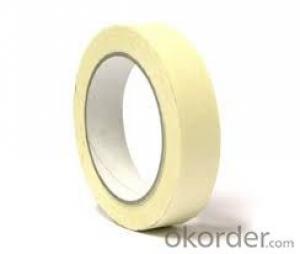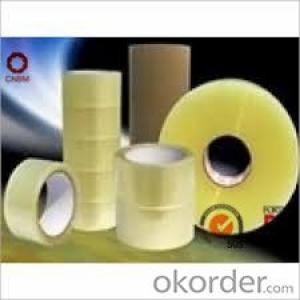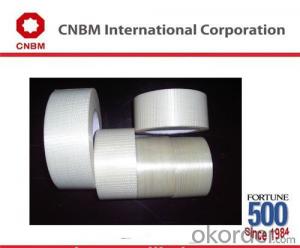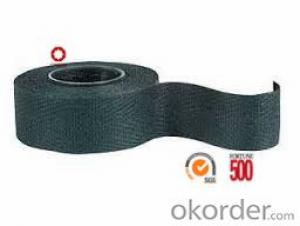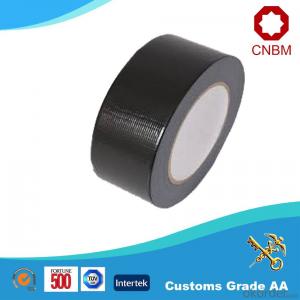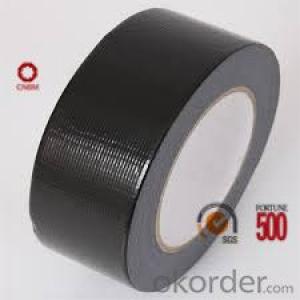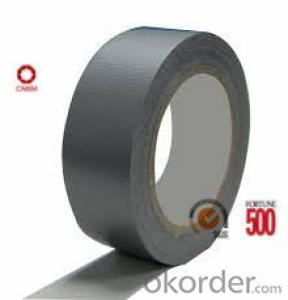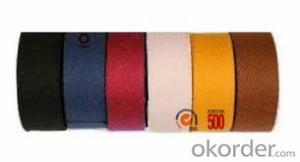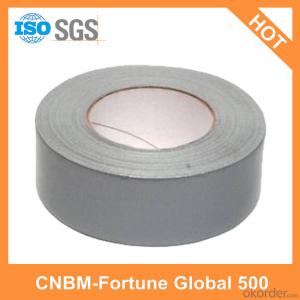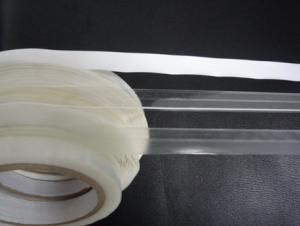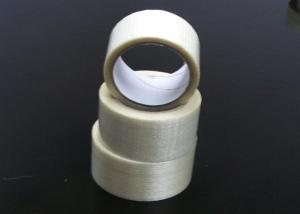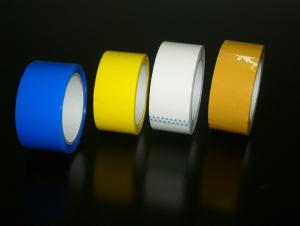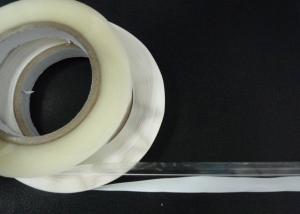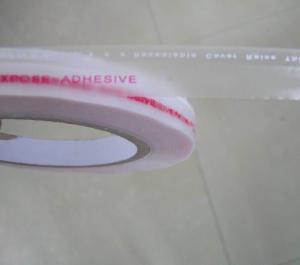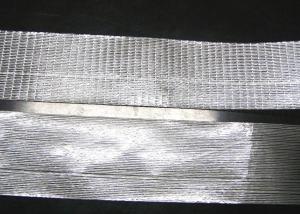Packaging Tape Adelaide Cloth Tape Polyethy Cloth Hot Melt Adhesive 35 Mesh
- Loading Port:
- Shanghai
- Payment Terms:
- TT OR LC
- Min Order Qty:
- 10000 m²
- Supply Capability:
- 20000000 m²/month
OKorder Service Pledge
OKorder Financial Service
You Might Also Like
Specifications
·World Top 500 Enterprises
·Resistance to cold, heat and aging
·Best quality and competitive price
·SGS&ISO9001
Description
The Cloth Tape is of polyethylene cloth as the carrier, coating with hot melt adhesive, synthetic rubber adhesive or nature rubber. It is excellent in flame retardant, high temperature stability, and anti-aging. It provides well insulation to various products.
The thickness of the tape can be customized.
General purpose of Cloth Tape: widely used for pipe wrapping, gaffers and book binding etc.
Typical Physical Reports of Cloth Tape
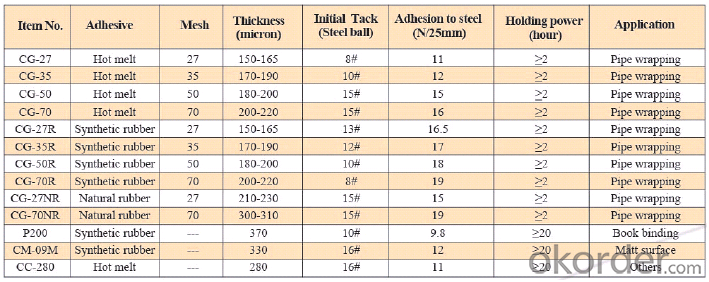
Packaging Detail
The thickness of the tape can be customized.
Log Roll: Length 1000mm; width 1060mm.
Cut Roll: As per customer’s requirements
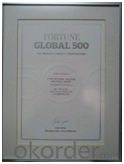
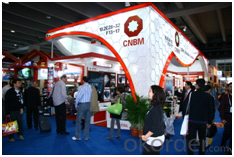
FAQ of Double Sided Tissue Tape
Q1. How about your company?
CNBM International Corporation (CNBM International) is a state-owned company and we have sound business relations with clients from over 120 countries. Currently, we have wholly-owned overseas subsidiaries and branches in 5 countries with a view to realize localization, which also represents an essential progress in our globalization target. We have over twenty years experiences.
Q2. What kind of service we can provide for you?
Sample of Cloth Tape is available.
Your inquiry will be replied within 12 hours.
24 hours service for you
Well-trained & experienced sales representative are ready to answer you.
Q3. How long can you receive the product?
Within 7-15 working days after receiving your deposit
Welcome to contact us and visit the factory!
- Q: Can packaging tape be used for sealing plastic wrap?
- Yes, packaging tape can be used for sealing plastic wrap. It provides a strong adhesive bond that helps secure the plastic wrap in place, keeping the contents protected and sealed.
- Q: Is packaging tape compatible with automatic packaging machines?
- Yes, packaging tape is compatible with automatic packaging machines. Automatic packaging machines are designed to work with a variety of packaging materials, including packaging tape. They are equipped with mechanisms to efficiently dispense and apply packaging tape to seal packages.
- Q: Can packaging tape be used for sealing sports equipment or gear?
- Yes, packaging tape can be used for sealing sports equipment or gear. It provides a strong and secure seal, helping to protect the equipment during transportation or storage. However, it's important to ensure that the tape is applied properly and that it doesn't damage or hinder the functionality of the gear.
- Q: Can packaging tape be used for sealing foam or bubble wrap?
- Yes, packaging tape can be used for sealing foam or bubble wrap. Packaging tape is designed to have a strong adhesive that adheres well to various surfaces, including foam and bubble wrap. By applying packaging tape to the edges or seams of foam or bubble wrap, you can securely seal and protect your items during shipping or storage. It is important to ensure that the tape is applied properly and firmly to provide a tight seal and prevent the foam or bubble wrap from coming loose.
- Q: What's the name of the sealing tape specification 40*50y y?
- Is the width 48mm length is 36m Y is smaller than the code.Y is the code, one yard =0.914 meters
- Q: Can packaging tape be used for sealing fabric?
- Yes, packaging tape can be used for sealing fabric to some extent. However, it is not the most suitable option for long-term or heavy-duty use. Packaging tape is primarily designed for sealing boxes and packages, so while it may work temporarily on fabric, it may not provide a strong and durable hold. Additionally, packaging tape may leave adhesive residue on the fabric or damage delicate materials. It is recommended to use fabric-specific tapes or adhesive products that are designed for sealing fabric, as they provide better adhesion and are less likely to cause damage.
- Q: Can packaging tape be used for sealing furniture or home goods?
- Yes, packaging tape can be used for sealing furniture or home goods. It provides a strong adhesive bond and helps secure the packaging, protecting the items during transportation or storage.
- Q: Can packaging tape be used for securing cables or cords?
- Indeed, cables or cords can be secured using packaging tape. Although it may not be the optimal option, particularly for prolonged or demanding uses, packaging tape can temporarily fasten cables or cords. This can aid in preventing entanglement or obstruction, particularly during transportation or storage. Nevertheless, it is crucial to acknowledge that packaging tape is not specifically designed for cable management. Consequently, it may not offer the same level of resilience or versatility as specialized cable ties or straps. For enduring or heavy-duty cable management, it is advisable to utilize products explicitly created for that intent.
- Q: Can packaging tape be used for securing cables or cords?
- Yes, packaging tape can be used for securing cables or cords. It provides a temporary solution for bundling and organizing cables, but it is not the most ideal or durable option. Using specialized cable ties or Velcro straps is recommended for a more secure and long-lasting solution.
- Q: Can packaging tape be used on different surfaces, such as cardboard, plastic, or metal?
- Yes, packaging tape can be used on different surfaces such as cardboard, plastic, or metal. Packaging tape is designed to provide a strong and secure seal, making it suitable for various materials. It adheres well to the rough surface of cardboard, ensuring that boxes and packages remain securely sealed during transit. Additionally, packaging tape can adhere to smooth surfaces like plastic, ensuring that items are securely packaged and protected. It can also be used on metal surfaces, providing a reliable seal for packages and boxes made of metal. Overall, packaging tape is versatile and can be used on different surfaces, making it an essential tool for packaging and shipping needs.
Send your message to us
Packaging Tape Adelaide Cloth Tape Polyethy Cloth Hot Melt Adhesive 35 Mesh
- Loading Port:
- Shanghai
- Payment Terms:
- TT OR LC
- Min Order Qty:
- 10000 m²
- Supply Capability:
- 20000000 m²/month
OKorder Service Pledge
OKorder Financial Service
Similar products
Hot products
Hot Searches
Related keywords
